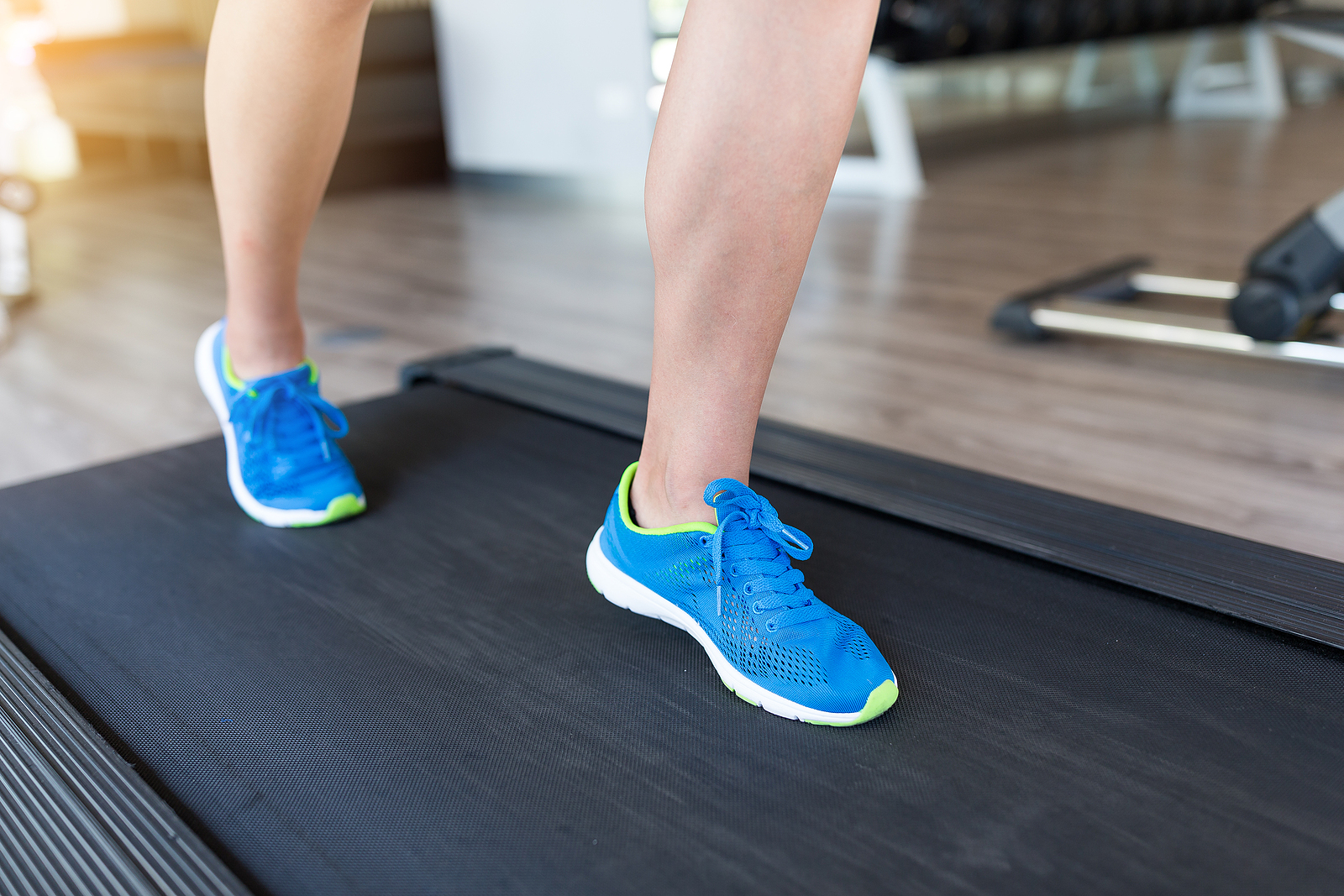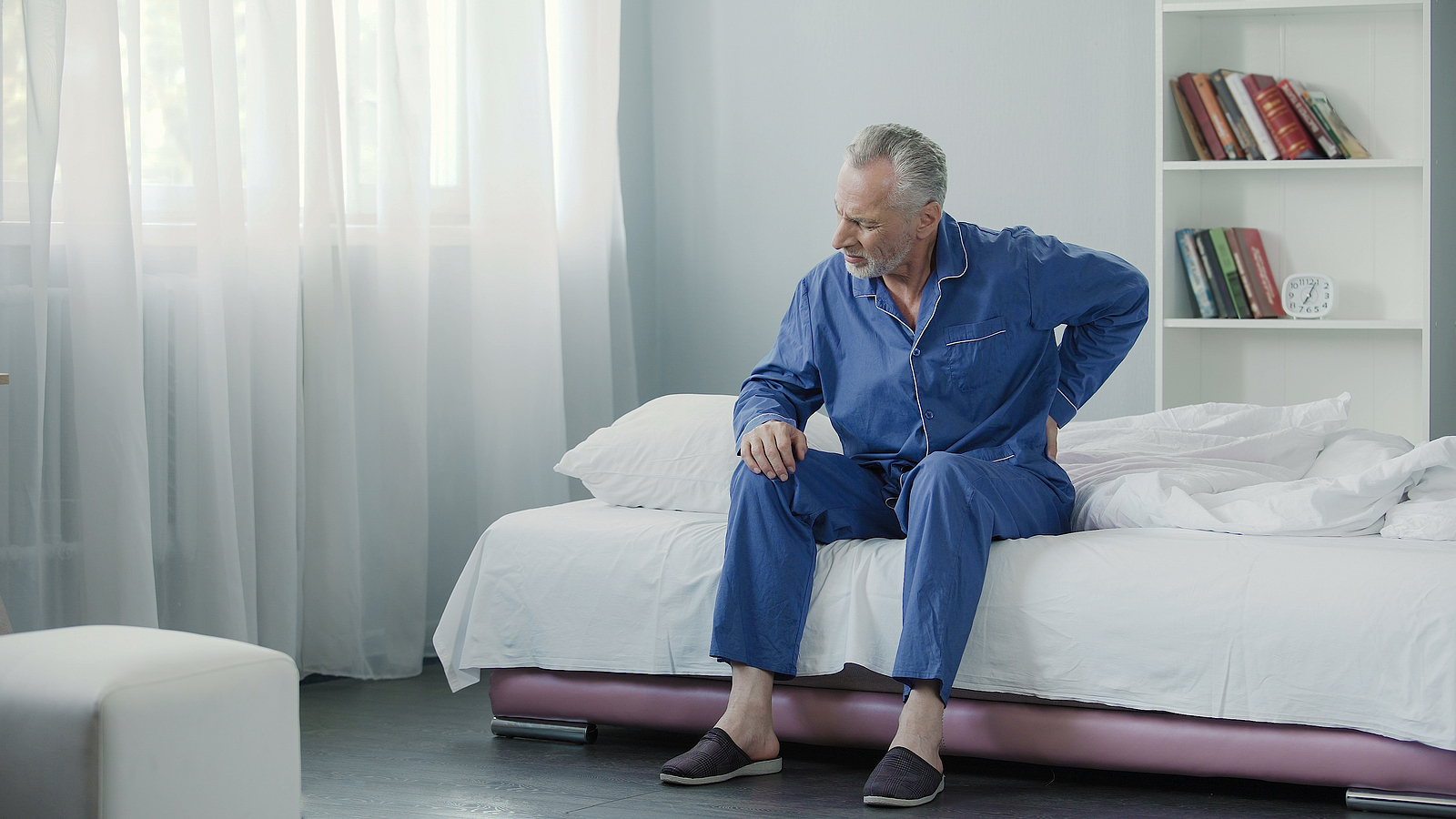Getting in and out of the bathtub is one of the most dangerous activities a senior likely faces on any given day.
The combination of hard, slippery surfaces and the reduced balance and mobility deficits that often come with aging can be a recipe for disaster.
And it doesn’t help that we’re usually at our most vulnerable in the bathroom either.
Getting in/out of the bathtub can be challenging, but knowing the proper technique and having the necessary tools can make it a lot safer for seniors.
In this guide, we’ll review step-by-step tips on how seniors can safely get in and out of the bathtub, as well as discuss some of the best assistive devices to make this process easier.
Finally, we’ll share a few more key considerations to help make your bathroom a safer place.
After reading, caregivers and seniors will be prepared to make getting in/out of the bath as safe as possible.
Why Bathtub Safety is Crucial for Seniors
Falls are the leading cause of injury among older adults and many of these accidents happen in the home.
In fact, according to the NIH, the most common areas for a fall to occur are the bedroom, bathroom, and stairs.
Which makes sense when you think about it – these areas tend to be the most used parts of the home.
Anyway, when it comes to bathroom activities, accessing the bathtub is easily one of the most challenging.
The slick surfaces of bathtubs and the need to step over high edges can pose significant risks, especially for those with mobility issues or balance problems.
And even if you do get in the tub safely, there’s still the often daunting task of getting out again.
If you’re able to successfully get in, take a bath, and get out without injury, that’s great – but it can also be an exhausting task.
I see patients all the time where taking a bath is the most exhausting activity they do all week.
Fortunately, there are strategies and tools that can make bathing safer and easier for seniors.
By following proper safety measures, seniors can:
- Reduce the risk of falls and injuries.
- Enjoy greater independence in daily hygiene routines.
- Preserve dignity and comfort while bathing.
- Improve activity tolerance for the rest of the day.
How to Safely Get In and Out of the Bathtub
Now depending on your mobility level, the safest way for you to bathe may be to give up getting into a tub altogether.
But I know soaking in a warm tub can feel great and some folks may not be ready to give it up just yet.
In these cases, the following should make getting in the tub easier:
How to Get Into the Bathtub Safely
1. Prepare Your Bathroom
Before attempting to enter the bathtub, ensure that the bathroom is safe.
Place non-slip mats both inside and outside the tub to prevent slipping. Make sure your bathroom is well-lit and free of obstacles that could cause tripping.
If possible, have grab bars installed on the walls near the bathtub for extra stability.
2. Position Yourself Near the Tub
Stand beside the bathtub with your feet hip-width apart for better balance.
If you have a transfer bench or shower chair, position it properly before proceeding.
For seniors with balance issues, holding onto a grab bar or using a walker for extra support is recommended.
3. Sit on the Edge of the Tub (or Transfer Bench)
Slowly sit on the edge of the bathtub (or transfer bench, if using one), keeping your feet planted firmly on the floor.
If using a transfer bench, sit on the outside edge first, and then gradually slide over into the tub.
4. Swing Your Legs Over the Edge
While holding onto a grab bar or the edge of the tub for stability, swing one leg over the edge of the bathtub at a time.
Take your time to avoid straining or losing balance.
5. Lower Yourself Gently into the Tub
Once both legs are inside the tub, use your arms and legs to slowly lower your body into a seated position in the tub.
If needed, hold onto grab bars or use a bath lift to ease the process. Avoid sudden or jerky movements.
Helpful tip: if you have a bad knee or hip, you can try to keep that leg extended out in front of you and use your strong leg to help your arms lower yourself into a seated position.
Alternate Strategy
The above technique is helpful for seniors who struggle with elevating their legs over the threshold of the tub, but if you can comfortably do this, you can skip the sitting on the edge of the tub part:
- While holding onto the edge of the tub (or grab bar preferably), carefully swing each leg over the edge, one at a time
- Once both feet are over tub edge, slowly lower self to knees, while holding on to tub edge for balance
- From here, turn and position self in comfortable seating position
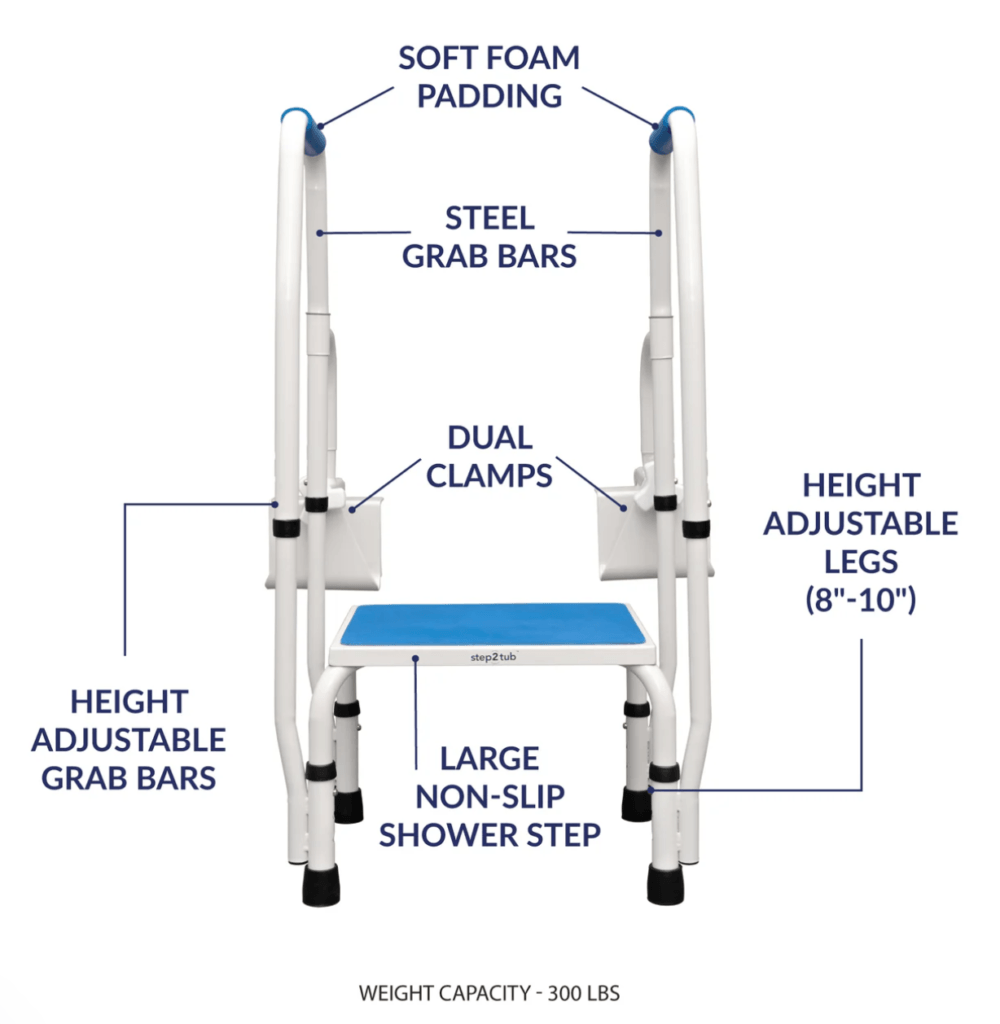
How to Get Out of the Bathtub Safely
Ok, you got in the tub, had a relaxing bath, and now it’s time to get out. Consider the following:
1. Position Yourself for Exit
When you’re finished bathing, move to a seated position near the edge of the tub. If you’re using a shower chair or transfer bench, scoot yourself toward the edge to make the transition easier.
2. Turn Onto Your Hands and Knees
From a sitting position, roll over so that you’re on your hands and knees in the tub.
This part can be uncomfortable, but if everything goes according to plan, you won’t have to be in this position for long.
Helpful tip: hot tub cushions can be used during this part to protect your knees and give you an additional boost to make getting up off the tub floor easier.
3. Transition to Kneeling
Once you’re on your hands and knees, bring one leg up and plant your foot firmly on the tub floor, putting yourself in a half-kneeling position.
While holding onto a grab bar or the edge of the tub to stabilize yourself, use your leg (and arms) to transition to a standing position.
Keep your movements slow and controlled to avoid slipping.
4. Swing Your Legs Over the Edge
Once standing, carefully swing one leg at a time over the edge of the tub.
If using a transfer bench, sit on the bench inside the tub and slowly move your legs outside, one at a time.
Keep a firm hold on the edge of the tub (or grab bar) throughout to reduce fall risk.
5. Stand Up and Exit the Bathroom
After both legs are outside the tub, use a grab bar or walker (if necessary) to help you stand.
Take a moment to ensure you feel balanced before walking out of the bathroom.
Alternate Strategy
If you struggle with elevating your legs high enough to clear the tub edge, you can try this alternate method:
- From a sitting position in the tub, switch over to your hands and knees
- Bring one foot up and plant firmly on tub floor, putting you in half-kneeling position
- From here, push up through leg (and arms) to sit on edge of the tub
- While holding onto the tub edge for support, slowly turn and swing each foot over the edge and plant firmly on the floor outside of the tub
- While holding on for support, slowly stand and prepare to walk
Essential Assistive Devices for Safe Bathing
If you (or a senior in your life) are having trouble getting in or out of the tub, it’s a good idea to consider one or more assistive devices because they can really make it a lot easier.
There are several assistive devices that can offer added support and the one that’ll work best for you depends on your needs.
Here are some of the most useful options:
Grab Bars
Grab bars are essential for seniors with mobility or balance issues.
These bars can be installed on the walls near the bathtub, providing something sturdy to hold onto when entering and exiting the bath.
They can also come in handy when standing in the tub too though.
Look for bars that are securely mounted and able to support a senior’s full body weight.
Helpful tip: avoid suction cup grab bars, which can easily pull off the wall and cause falls. Always go for the bolt-on options, which are much safer.
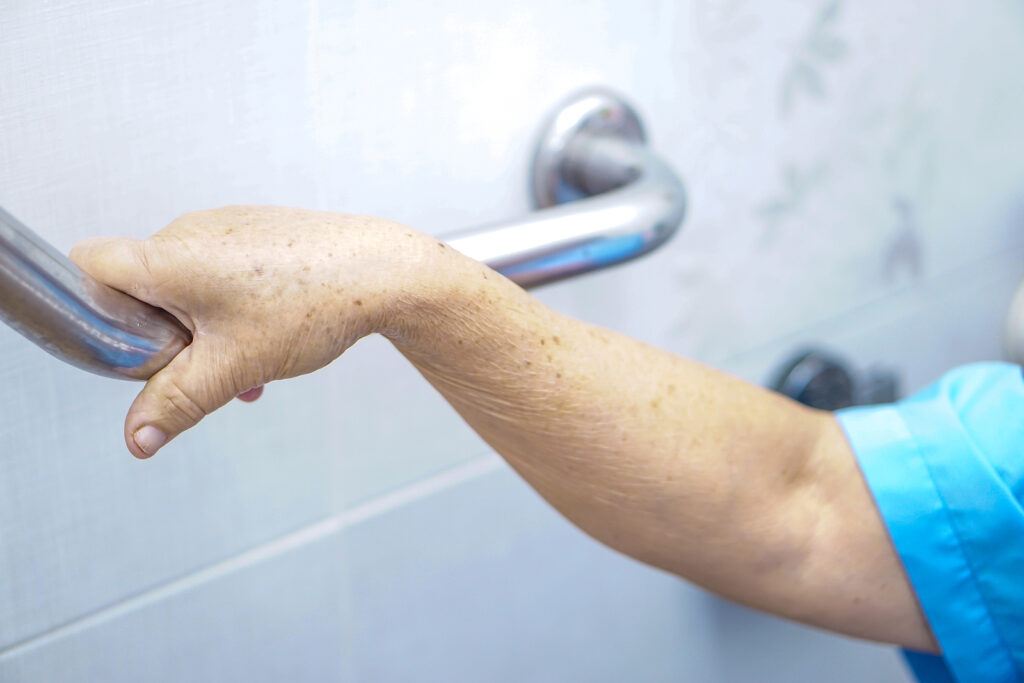
Non-Slip Mats
Non-slip mats should be placed both inside and outside the tub to prevent slipping on wet surfaces.
These mats are often textured or rubberized for extra grip and stability and they should be used in any bathroom a senior may be using.
Make sure to keep an eye on them and replace as needed.
Handheld Shower Heads
A handheld shower head allows seniors to wash while sitting on a shower chair or bench.
It’s easy to use and reduces the need for excessive movement or standing. Adjustable shower heads with long hoses make it easier to reach all areas without strain.
They can also help keep water inside the tub when using a transfer bench.
Transfer Benches
A transfer bench is a long seat that extends over the edge of the bathtub and it can make getting into the tub or shower area a lot easier.
Seniors can sit on the outside of the bench and slide over into the tub, minimizing the need to step over the tub’s high edge.
Transfer benches are especially helpful for those with limited leg strength or flexibility.
The only downside to these benches is their size – since they extend past the edge of the tub, they may not fit in smaller bathrooms.
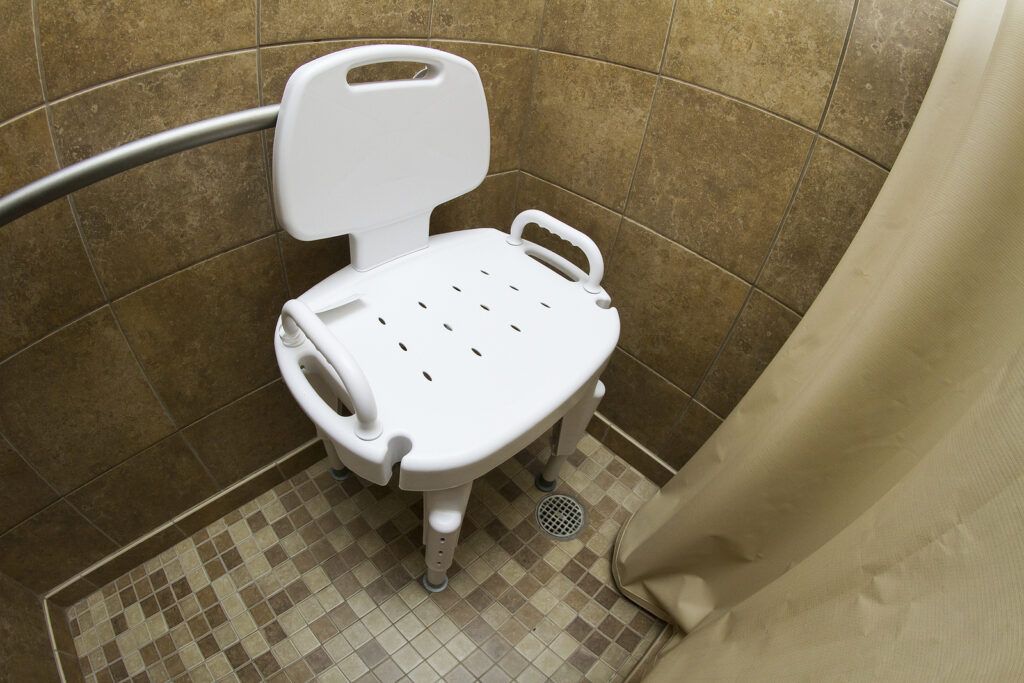
Shower Chairs
Shower chairs allow seniors to sit comfortably while bathing, reducing the need to stand in the shower.
These chairs often come with non-slip feet and adjustable heights to fit various tubs. Many models also include armrests and back support for added safety and comfort.
Unlike transfer benches, shower chairs are smaller and fit completely within the tub/shower, making them good options for smaller bathrooms (or for seniors who don’t struggle with stepping over the tub edge).
Clamp-On Rails & Steps
If you don’t like the idea of bolting a handrail to the wall, a clamp on rail could be a good alternative.
These handy rails come in various sizes and can install easily on most tubs in a few minutes.
Simply tighten the clamp and the rail is ready to provide stable hand holds while getting in/out of the tub.
And for seniors who struggle with elevating their legs over the edge of the tub, a rail/step combo like the Step2Tub could be a big help.
The Step2Tub comes with two handrails and a non-slip step, making it safer for seniors to climb over and access the tub.
This handy device makes it a lot easier to get out of the tub as well.
Bath Lifts
A bath lift is a motorized seat that gently lowers seniors into the tub and lifts them out when they’re done.
These devices are ideal for individuals with severe mobility limitations who need extra assistance getting in and out of the tub.
Bath lifts are easy to operate with handheld controls and they’ve gotten a lot more affordable over the years.
Helpful tip: these lift chairs could also be used to help get a senior who’s fallen get up from the floor.
Additional Safety Tips for Bathing
Beyond using assistive devices, there are a few other ways seniors can make bathing a safer experience:
- Keep Bathroom Floors Dry: Wet floors can be extremely slippery. Be sure to wipe up any excess water immediately and use non-slip rugs outside the tub.
- Use Bathing Assistance When Needed: For seniors with severe balance or mobility issues, having a caregiver or family member assist with bathing can provide an extra layer of safety.
- Plan Your Exit Strategy: Before getting into the bathtub, have a plan for how you will safely exit. Ensure all necessary assistive devices are in place, and don’t hesitate to ask for help if you’re unsure about your ability to get out of the tub independently. And don’t forget to have your towel ready in advance!
- Install a Walk-In Tub: Walk-in tubs are designed with a door that allows you to step directly into the tub without climbing over the edge. These tubs are ideal for seniors with significant mobility challenges, as they eliminate the need for dangerous maneuvers. They’re not cheap, but they could be worth the investment if it lets you continue bathing comfortably.
When to Seek Professional Assistance
If getting in and out of the bathtub remains a challenge even with assistive devices, it may be time to seek professional help.
An occupational therapist can recommend personalized solutions to improve bathroom safety.
They can assess your individual needs and suggest modifications to your home or routine that can make bathing easier and safer.
If interested, discuss with your family physician to see if you can get a referral.
Final Thoughts
Bathing’s one of the most necessary activities of daily living and it’s unfortunate that it’s also one of the most dangerous.
And for seniors, being able to get in and out of the tub safely can mean the difference between living independently and needing assistance.
And even though we can’t completely eliminate fall risk during bathing, we can significantly reduce it.
By following the right techniques, using assistive devices, and creating a safer bathroom environment, older adults can enjoy bathing with added confidence.
And again, I can’t stress the importance of using assistive devices as needed to make bathing safer – these simple devices can make a world of difference!
I hope you found this guide helpful and if you have any questions or comments, please leave ’em below and I’ll get back to you shortly.


